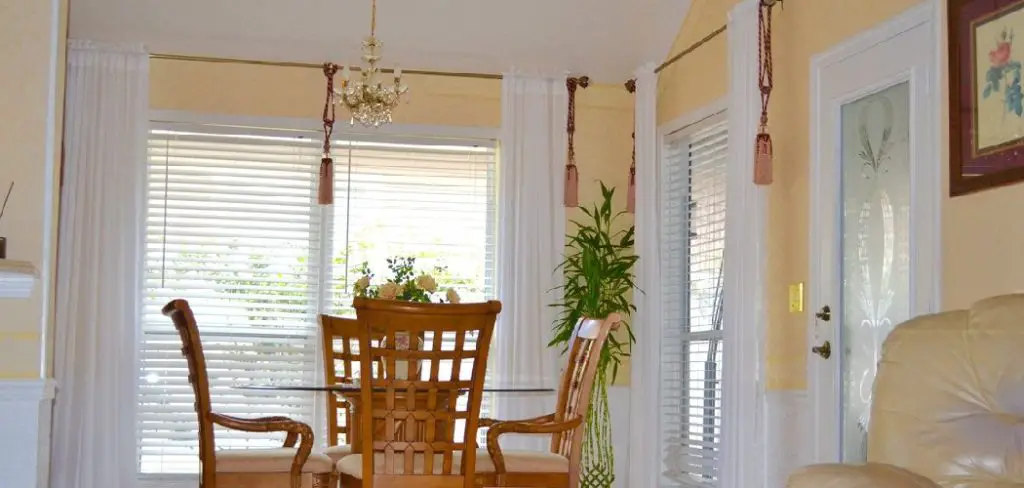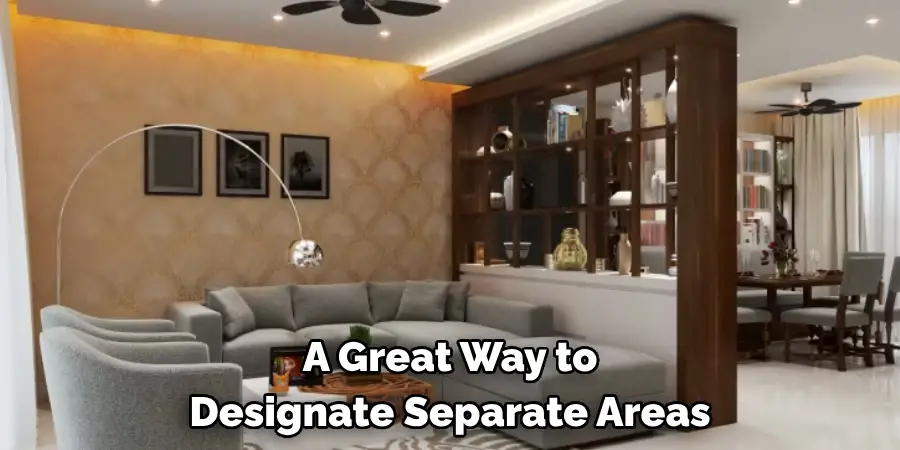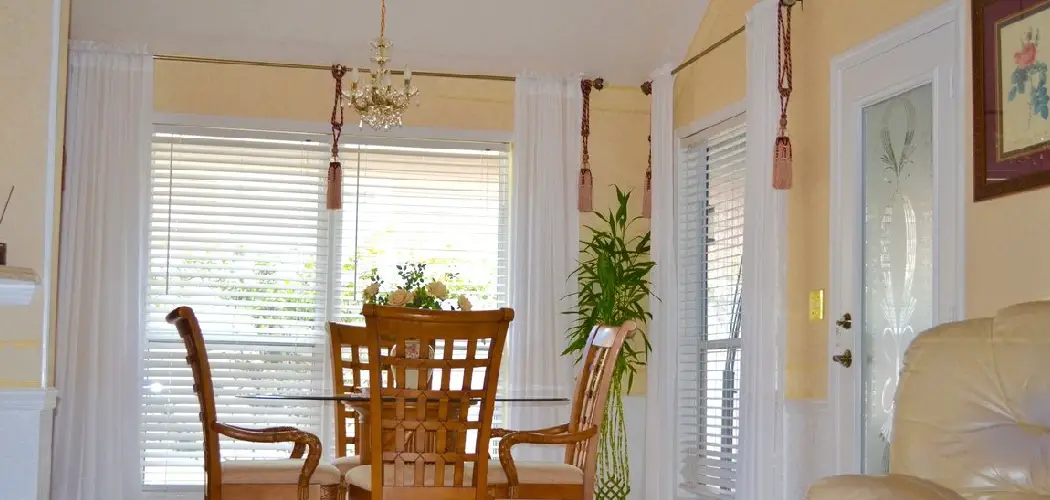Do you have a living room and a dining room that need to work together, but are feeling disconnected? Are you looking for creative solutions to section off the space in unique ways? If so, then this blog post on how to divide living room and dining room is just what you need. Here, we’ll be exploring different ideas on how to divide your living and dining rooms, all while still creating an inviting atmosphere in both areas of your home.
From utilizing stylish furnishings and clever accessories to simple architectural updates that can separate the two spaces without blocking them off entirely—we’ve got tons of options that will allow you to successfully divide these two spaces as well as create harmony between them! So if you’re ready to discover some great remodeling tips for dividing your living and dining room areas into one cohesive area, let’s get started!

Why Do You Need to Divide Your Living Room and Dining Room?
When it comes to dividing your living room and dining room, there are several reasons why it’s beneficial to do so. First, by having separate spaces for each area of your home, you can keep clutter out of the way and help maintain a cleaner overall look in both rooms. Additionally, if you have guests over or plan on entertaining regularly, creating defined spaces will help make it easier to set up furniture for appropriate seating arrangements.
Finally, separating the two areas can also help you create a more balanced aesthetic in your home. With different styles and colors in each room, you’ll be able to give your home a unique look that exudes personality and charm. Now that we’ve explored why it’s important to divide your living room and dining room, let’s look at some ways to get it done!
Needed Materials
Given below are some of the materials you may need when dividing your living room and dining room:
Furniture
Invest in stylish pieces like a sofa, armchair, or table to create visual barriers between spaces.
Area Rugs
A great way to designate separate areas without blocking anything off is for area rugs! Choose a patterned rug for the dining room and a solid rug for the living room to make each area stand out.

Wall Art
Hang up artwork or other wall decorations to break up the space between your living and dining rooms.
Wall Dividers
You can also use wall dividers to divide the two spaces without blocking either one off entirely.
Shelving Units
Invest in shelving units to delineate between the two spaces. You can use them to create stacked walls and they also provide extra storage space!

10 Step-by-step Guidelines on How to Divide Living Room and Dining Room
Step 1: Evaluate the Size and Layout of Your Space
The first step to dividing your living room and dining room is evaluating the size and layout of your space. This will help you determine which kind of partitioning will work best for your particular needs. It’s also important to consider the size of any furniture you may already have in each room. Always keep in mind the overall look and feel you want to achieve when selecting furniture pieces for each area.
Step 2: Choose the Style of Your Decor
Once you’ve evaluated your space, it’s time to choose the style of your decor. You’ll want to pick a color palette and design elements that will help create harmony between the two areas. This could mean choosing complementary colors or sticking with a single hue throughout both spaces.
Step 3: Utilize Furniture
Utilizing furniture is a great way to section off the two rooms without blocking them off entirely. You can use a sofa, armchair, or table in each room to create visual barriers between spaces. But remember, always keep in mind the overall aesthetic you’re trying to achieve when selecting furniture pieces for each area. This will help ensure that the two areas flow together seamlessly.

Step 4: Select Area Rugs
Area rugs are an excellent way to further divide the two areas. Choose a patterned rug for the dining room and a solid rug for the living room to make each area stand out. This will help you create separate yet harmonious spaces. It’s also a great way to add texture and depth to the two areas of your home.
Step 5: Hang Wall Art
Hanging up artwork or other wall decorations can also help break up the space between your living and dining rooms. Consider adding a statement piece to the wall of one room that will draw attention and give your space character. You can also hang up a large mirror to reflect light and make the two areas appear larger. But make sure to keep it in line with the overall aesthetic you’re trying to create.
Step 6: Use Wall Dividers
Wall dividers are another great way to divide the two spaces without blocking either one off entirely. Consider investing in a divider that can be moved around as needed or hung up permanently for a more permanent arrangement. If you’re looking for a more flexible option, try using a folding screen or room divider to give the two areas some separation. This will help define each area while still keeping them connected.
Step 7: Create Separated Storage Areas
Creating separated storage areas can help further divide the two rooms while also providing extra storage space. Invest in shelving units that can be used to separate the two rooms, or use furniture with built-in storage for an even sleeker look. However, make sure to select furniture pieces that will complement the overall style of both areas.
Step 8: Incorporate Lighting
One of the most important elements to consider when dividing your living room and dining room is lighting. Utilize overhead lights, wall sconces, and lamps in both sections of the two areas as well as provide adequate light for each space. It’s also a great way to accentuate each area and create the perfect ambiance for entertaining.
Step 9: Consider Window Treatments
Be sure to consider window treatments when creating your space. You can use curtains or blinds to help separate the two rooms while still allowing natural light to come in. This will help you keep the two areas connected while still providing enough privacy. It’s also a great way to add color and texture to your home.
Step 10: Add Accessories
The last step is to add accessories to each room. This could include pillows and throw blankets for the living room, as well as items like vases, dishes, and trays for the dining room. Accessories can help tie together both rooms and provide a unifying look to your space. Always keep the overall style in mind when selecting items for each area.

By following these steps on how to divide living room and dining room, you’ll be able to successfully divide your living room and dining room while creating an inviting atmosphere in both areas of your home. Whether it’s utilizing stylish furnishings or simple architectural updates—you’re sure to craft a unique space that will give your home character and charm.
Do You Need to Hire Professionals?
Divvying up your living room and dining room does not have to be a daunting task. While there are several steps involved in the process, most of them can easily be done on your own with some careful planning and creativity. That being said if you need help or would like to give your space a more polished look—you may consider hiring professionals who can assist you in creating the perfect atmosphere for your home.
No matter what route you choose to take, dividing your living room and dining room can be an exciting process that will make entertaining much more enjoyable! So don’t be afraid to get creative and use these tips and guidelines as a starting point when crafting unique spaces in your home.
How Much Will It Cost?
The cost of dividing your living room and dining room depends on the materials you choose to use as well as any professional help you may need. Investing in stylish pieces like a sofa, armchair, or table can range from a few hundred dollars to several thousand, depending on the quality and brand. Similarly, having professionals come in to assist with the arrangement and design can add up depending on their experience.

Overall, the cost of dividing your living room and dining room is largely dependent on the type of materials you use as well as any professional assistance you may need. Do some research to find the best options for your particular space and budget. That way, you’re sure to create a unique atmosphere that fits both your style and your wallet.
Conclusion
Creating an inviting and functional living room and dining room blending is a great way to bring the different areas of your home together. By creatively merging these two spaces, not only can you create a cozier atmosphere in your home but also save on space. Whether you incorporate a few clever pieces or give the spaces more of a blended look with open-plan layouts, using furniture that flows between the two will help make your dining area complementary to the living room and vice-versa.
With careful thought put into this article on how to divide living room and dining room, you can ensure that anything from design to practical reasons has been thoroughly examined before making decisions on how to divide the living room and dining room spaces. The combined effect should be one that is pleasant for all members of the family to enjoy, helping to create a much cozier overall mood for creative activities at home.

